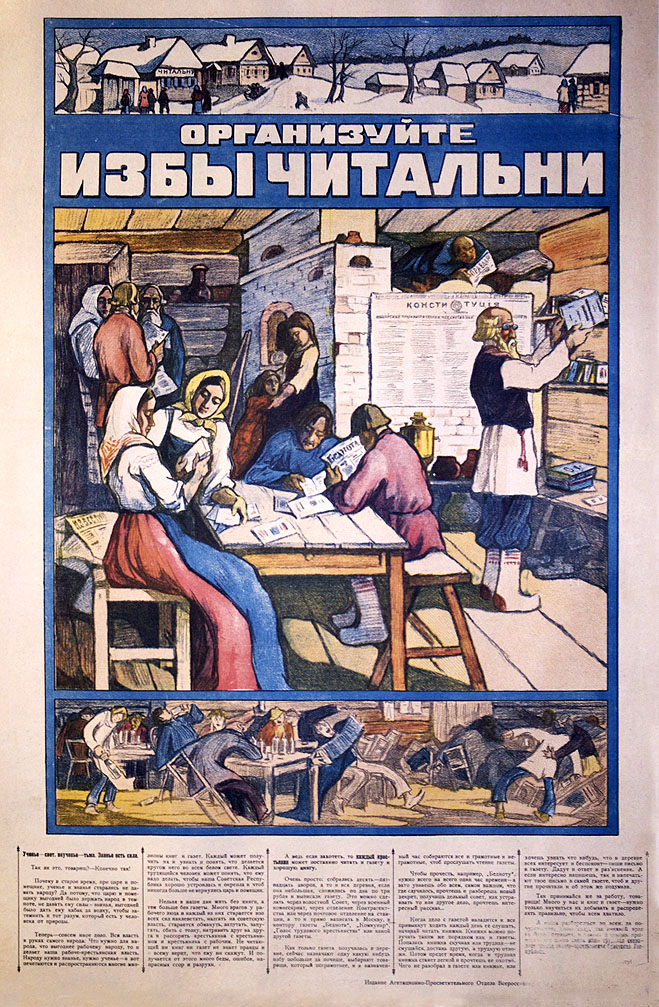
Organize Country Houses of Reading. Learning is Light. Ignorance is Darkness. Knowledge is Power. [Partial translation]
Poster Number: PP 792
Category: Education & Literacy
Poster Notes: Text of PP 792 is same as PP 793; [On house in top picture] Country House of Reading; [In man’s hand] "The Landless Farm Worker"; [Underneath woman in red] "News"; [Posted on oven] "Constitution"; [In hands of man leaning on oven] “Pravda”.
Media Size: 34.5x24
Poster Type: Lithograph
Publishing Date: c.1919
Sources & Citation: Soviet Posters of the era of the Civil War 1918-1921 by B.S. Butnik-Siverskii (1960), page 494-95, poster 3348; Main, S. J. (1989). The creation, organisation and work of the Red Army's political apparatus during the civil war (1918-1920).* University of Edinburgh (PhD dissertation consulted)
Catalog Notes: PP 792 Education & Literacy; Sister Poster PP 793
Artist: Apsit, Aleksandr Petrovich (Apsītis, Aleksandrs) — Апситис, Александр Петрович
Alexandr Petrovich Apsit grew up amidst dire poverty and yet he received free instruction under the tutelage of the Saint-Petersburg painter, Lev Dmitriev-Kavkazskii. By 1902, Apsit was noticed by the popular journals, including Rodina [Motherland], Zvezda [Star], and Niva, for which he produced sketches. He also illustrated the publications of writings by A.M. Gorkii, N.S. Leskov, and A.P. Chekhov, as well as those by D. Bedny, I.S. Nikritin, and M.E. S...
Read More About This Artist
Printer: Printer not indicated —
Publisher: All-Russian Bureau of Military Commissars, Agitation and Education Department — Всероссийское бюро военных комиссаров (VBVK)
The publishing arm of the All-Russian Bureau of Military Commissars (VBVK) is historically considered to be the Bolsheviks' first centralized political organ for the Red Army. It was formed in April 1918 when the People’s Commissariat for Military Affairs issued a decree on the creation of military councils (soviets). This action established commissariats for military matters at the rural, provincial and district levels, and it also formed the All-Russian Bureau of Military Commissars that became th...
Read More About This Publisher